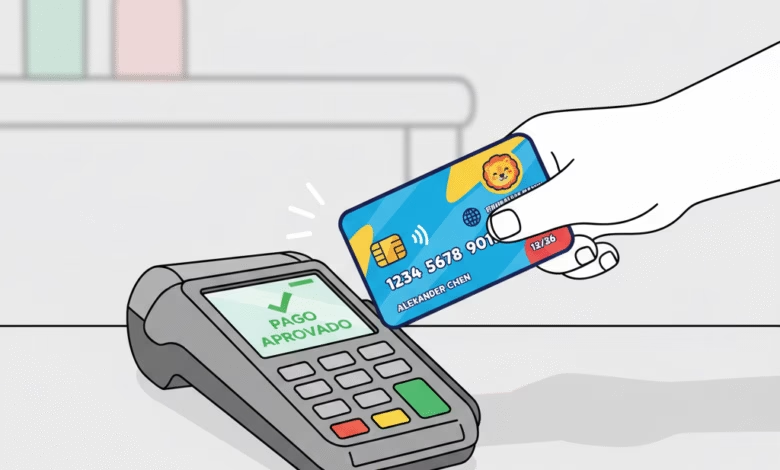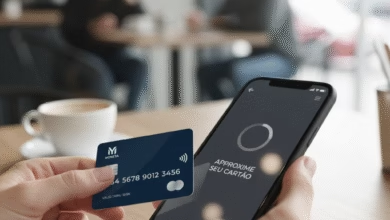How to build a healthy relationship with money
Learn how to create a good relationship with your finances

Does the thought of checking your bank account fill you with dread? Do you avoid opening bills? Or are you on the other end of the spectrum, obsessively tracking every market dip and feeling your self-worth rise and fall with your 401(k)?
For millions of Americans, money is the number one source of stress. It’s the elephant in the room, the silent cause of arguments, and a heavy weight that follows us everywhere.
We’re often taught how to make money, but almost no one teaches us how to live with it. We’re given complex advice on investing in stocks, bonds, and credit default swaps, but no one explains how to stop a “retail therapy” spending spree or how to talk to a partner about debt without it turning into a full-blown fight.
Here’s the truth: You can have a high income and still have a toxic relationship with money. And you can have a modest income and feel completely at peace.
Building a “healthy relationship with money” isn’t about becoming a millionaire (though that can be a nice bonus). It’s about transforming money from a source of fear and anxiety into a predictable, boring, and effective tool that helps you build a life you actually love.
This is your practical guide to achieving financial peace.
What Does an ‘Unhealthy’ Relationship with Money Look Like?

Before we can fix the problem, we have to be able to see it. An unhealthy relationship with money isn’t just about being “bad with numbers”; it’s about a pattern of emotional, dysfunctional behavior. See if you recognize any of these archetypes.
The “Financial Ostrich” (Avoidance and Fear)
This is the person who lives in a state of willful ignorance. They don’t check their bank account balance, let bills pile up unopened, and have no idea how much debt they’re in. The anxiety of knowing feels so overwhelming that they choose to not know. The problem? This avoidance doesn’t make the problems go away; it just ensures they’ll be a catastrophic emergency later instead of a manageable problem now.
The “Emotional Spender” (Impulse and Comfort)
This person uses money as a coping mechanism. Had a bad day at work? A new pair of shoes will help. Feeling sad or lonely? A big online shopping haul provides a temporary high. Money is tied directly to emotion. The “I deserve this” mentality often leads to a cycle of impulse spending, followed by a “shame hangover” of guilt and financial stress.
The “Obsessive Scarcity-Hoarder” (Anxiety and Control)
This is the person who has money—often a lot of it—but is terrified of spending a single dime. They live in a state of perpetual scarcity, constantly worrying about the next market crash or a medical emergency. They might have millions in the bank but still stress over buying a name-brand coffee. Their money doesn’t serve them; they are a slave to it.
The “Money Scorekeeper” (Ego and Comparison)
This person’s entire self-worth is tied to their net worth. Money isn’t a tool for security; it’s a way to keep score against friends, family, and the anonymous “Joneses” on social media. They are driven to get the bigger house, the fancier car, and the more expensive vacation, often financing it all with debt, just to look successful.
Why Your Money Mindset is More Important Than Your Salary

Your relationship with money began long before you got your first paycheck. It was formed in childhood, by observing how your parents handled (or mishandled) their finances.
These deep-seated, often unconscious beliefs are called “Money Scripts.” They are the “truths” we tell ourselves about money, and they dictate all our financial behaviors.
Common (and harmful) money scripts include:
- “Money is the root of all evil.” (This can lead to self-sabotage, as you’ll feel “bad” or “greedy” for having it.)
- “Money doesn’t grow on trees.” (This fosters a scarcity mindset, making you feel like money is always hard to come by.)
- “You have to spend money to show people you love them.” (This can lead to overspending on gifts and high-pressure holidays.)
- “Rich people are all greedy/unethical.”
- “I’ll never be good with money.” (A self-fulfilling prophecy.)
You cannot out-earn a bad money script. If you believe, deep down, that you “don’t deserve” money, you will find a way to get rid of it (through impulse spending, bad investments, or “loaning” it to people who never pay you back), no matter how high your salary gets.
A healthy relationship starts with digging up these scripts and rewriting them.
Step 1: Diagnose Your Financial “Money Scripts”
You can’t change what you don’t acknowledge. This first step is an audit—not of your money, but of your beliefs. Grab a pen and paper and spend 10 minutes answering these questions with gut-level honesty. There is no judgment here.
- What is your first or most powerful childhood memory involving money?
- What did your parents teach you about money, either through their words or their actions?
- Complete this sentence: “Money is…” (What’s the first word that comes to mind? “Stressful”? “Freedom”? “Complicated”?)
- Complete this sentence: “People with a lot of money are…”
- What is your biggest, most secret fear about money?
Looking at your answers, you’ll start to see a pattern. You’ll see the “story” you’ve been telling yourself. The goal is to separate that old story from your current reality. Your parents’ financial struggles are their story, not yours. Your past mistakes are data, not a life sentence.
Step 2: Practice Financial Mindfulness (The “No-Shame Audit”)
Now, we move from the past to the present. It’s time to get your head out of the sand, but with a new rule: No Shame, No Judgment. You are not a “bad person” for having debt. You are not “stupid” for not knowing where your money went. You are simply a person who needs better data.
Your mission is to become a “financial scientist,” calmly observing the data.
Know Your “Foundational Four” Numbers
To build a plan, you need a starting point. You must know these four numbers:
- What You Earn: Your total monthly take-home pay (net income).
- What You Owe: A simple list of all your debts (credit cards, student loans, car loans) with their balances and interest rates.
- What You Spend: This is the big one. Track every dollar for 30 days. Use an app, a spreadsheet, or a small notebook. Don’t change your behavior; just track it. You’ll be shocked at where your money is really going.
- What You Own: Your total assets (cash in the bank, 401k/IRA, home equity, etc.).
Your Net Worth is simply What You Own minus What You Owe. This is your personal “score,” and the only one that matters.
Step 3: Create a “Value-Based” Budget (And Stop Hating the “B” Word)

The word “budget” makes most people flinch. We hear “restriction,” “diet,” and “no fun.”
Let’s reframe this completely.
A budget is not a prison. A budget is a permission slip. It is a plan you create that gives you explicit permission to spend money on the things you truly value. It’s not about cutting out lattes; it’s about asking, “Do I value this $7 latte more than I value my goal of a debt-free vacation?”
Identify Your True Values
Forget money for a second. What matters to you in life?
- Freedom / Flexibility?
- Security / Peace of Mind?
- Experiences / Travel?
- Family?
- Generosity?
- Convenience?
Align Your Spending with Your Values
Look at your 30-day spending report from Step 2. Now, look at your list of values. Does your spending align with your values?
You might find you value “Freedom,” but $800/month is going to a car payment for a luxury car you don’t even like driving. You might value “Experiences,” but $400/month is disappearing into random online subscriptions and takeout.
A “Value-Based Budget” is the simple act of redirecting money away from things you don’t care about and toward the things you do. If you love lattes and they bring you genuine joy, put them in the budget! Create a “Guilt-Free Coffee” fund.
A simple starting point is the 50/30/20 Rule:
- 50% of your income for Needs (Housing, utilities, groceries, transportation)
- 30% for Wants (Dining out, hobbies, shopping, that latte)
- 20% for Savings & Debt (Paying down credit cards, building an emergency fund, investing in your 401k)
Step 4: Give Every Dollar a Job (The Key to Real Control)
This is the most practical and powerful shift you can make. It’s the core idea of systems like YNAB (You Need A Budget).
When your paycheck hits your checking account, don’t just see it as one big pile of money. If you do, that pile will just “disappear.”
Instead, act like a manager and give every single dollar a job to do before you spend it.
- “$1,500, your job is to pay the rent.”
- “$400, your job is to buy groceries for the month.”
- “$150, your job is to sit in the ‘Car Repair’ fund until I need you.”
- “$50, your job is to be ‘Fun Money’ for this Friday.”
This is how you create “Sinking Funds” for non-monthly expenses. You know your car will need new tires eventually. You know Christmas comes every year. Instead of it being an “emergency,” save $50 a month for it. When the $600 bill hits, you don’t panic. You just use the money you set aside. This is how you kill financial anxiety.
Step 5: Automate Your Financial Future (The Antidote to Emotion)
A healthy relationship with money means not having to think about it all the time. The best way to do this is to build an automated system that runs in the background, building wealth while you live your life.
Automation is the single best way to defeat emotional spending and market panic.
Pay Yourself First: The Unbreakable Rule
The “Pay Yourself First” model is a game-changer. It flips the traditional budget script.
- Wrong Way: Get paid -> Pay bills -> Buy stuff -> See what’s left over to save. (Usually $0).
- Right Way: Get paid -> Save & Invest (AUTOMATICALLY) -> Pay bills -> Buy stuff with what’s left.
Set up an automatic transfer from your checking to your savings account for the 1st of every month, the day after you get paid. This money is now “gone.” You learn to live off the rest.
Automate Your Path to Peace and Wealth
- Automate Your Emergency Fund: Set up that transfer to a high-yield savings account. Don’t stop until you have 3-6 months of living expenses. This fund is your ultimate buffer against life’s “surprises” and the #1 tool for reducing financial anxiety.
- Automate Your Debt Payments: If you have high-interest credit card debt, set up automatic, aggressive payments. This is a guaranteed, high-return “investment.”
- Automate Your Investments: This is non-negotiable. Your 401(k) contribution should come directly out of your paycheck. You should have an automatic transfer to your IRA or brokerage account every month. This forces you to buy consistently (dollar-cost averaging) and stops you from trying to “time the market.”
How to Talk About Money (Without Screaming)

You can have a perfect budget and an automated system, but if you can’t talk about money with the people in your life, your relationship will remain unhealthy.
With a Partner: From Conflict to Collaboration
Money is a leading cause of divorce, but it doesn’t have to be.
- Set “Money Dates”: Schedule a 30-minute, low-stress check-in once a month. Do it over pizza or wine. This is not the time to bring up that “one stupid purchase.” This is the time to look at your shared goals.
- Share Goals, Not Just Accounts: You don’t have to combine all your money. You do have to be on the same page about your goals. (e.g., “We want to be debt-free in 3 years,” “We want to buy a house,” “We want to retire at 60.”)
- No Blame, No Shame: Use “I” statements. Instead of “You spend too much on gadgets,” try “I feel anxious when I see our credit card bill because I’m worried about our debt goal.”
With Family and Friends: Setting Healthy Boundaries
This is tough. Your healthy relationship with money will mean saying “no” sometimes.
- “Keeping Up with the Joneses”: When friends suggest a dinner or vacation you can’t afford, be honest. “That sounds amazing, but it’s not in my budget right now. How about we [suggest a cheaper alternative] instead?” Real friends will understand.
- Loaning Money: A healthy boundary is often: “I have a personal policy of not loaning money to family/friends, as it can damage our relationship, which I value too much. I’m happy to help in other ways [babysit, cook a meal, help with a resume].”
Redefining “Rich” for a Life You Value

A healthy relationship with money is a journey, not a destination. You will make mistakes. You will have emotional spending days. It’s okay. The goal is not perfection; it’s progress.
It’s about the slow, steady, and “boring” process of building a system that serves you.
Ultimately, this journey changes your definition of “rich.” You realize “rich” isn’t a number in an account. It’s sufficiency—having enough to live your values. It’s control—knowing where your money is going and why. And it’s peace—being able to sleep at night, knowing that you have a plan and a system that’s working for you, even when you’re not thinking about it.
Money is a powerful tool. It’s time to stop letting it be your master and start making it your servant.





